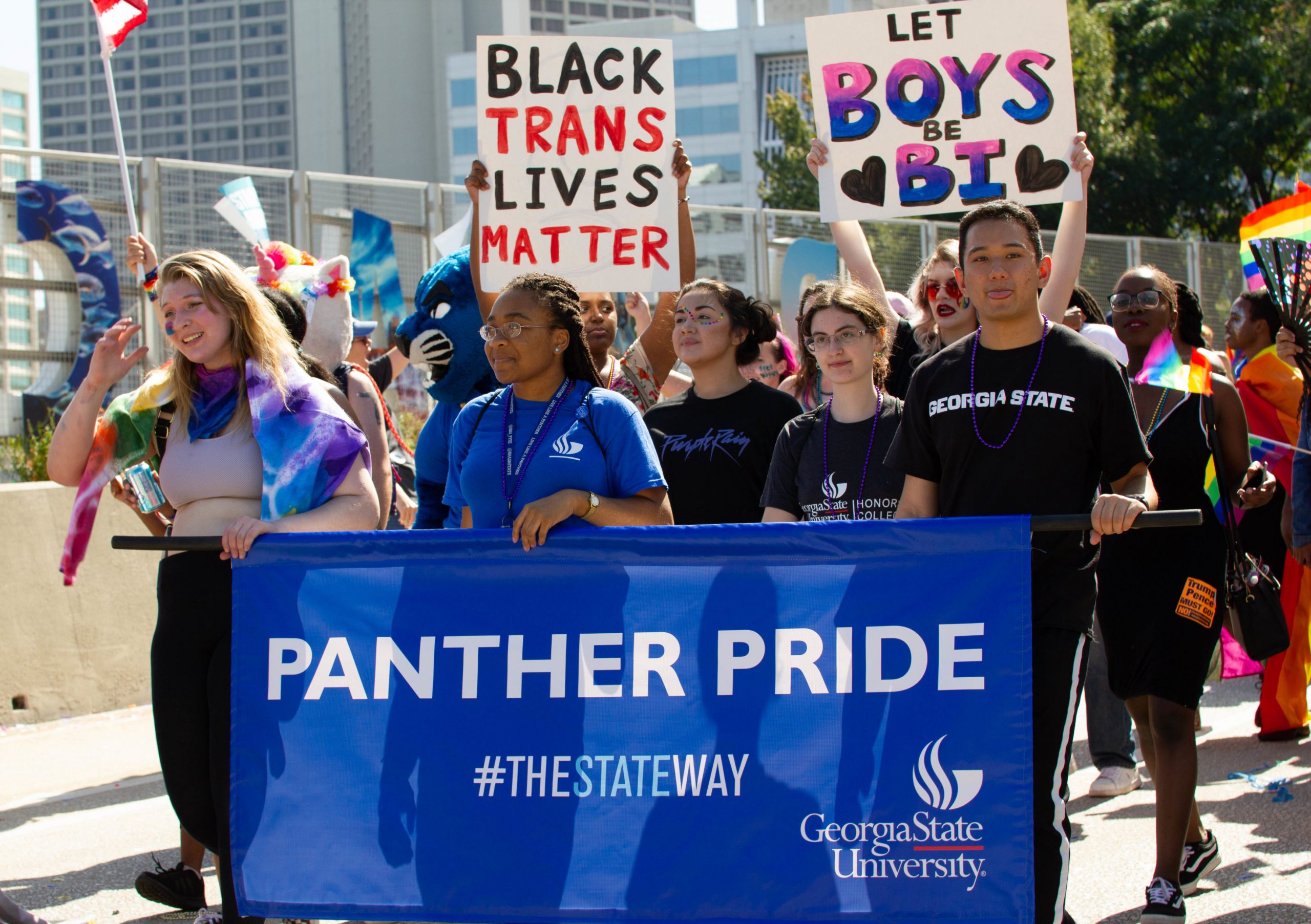From covered faces to full frontal: a timeline of Atlanta Pride
[dropcap]T[/dropcap]he first Pride in Atlanta was met with media silence. Activists walked down Peachtree Street in 1971, on the second anniversary of the police attack at the Stonewall Inn, also referred to as the Stonewall riots. They passed out “zines,” informal self-published magazines, with posters and pamphlets as they went—essentially DIY social media in the analog age.
In 1972, City of Atlanta Mayor Sam Massell appointed Charlie St. John to Atlanta’s Community Relations Commission as a representative of LGBTQ interests. At the time, St. John worked as a copy boy for the Atlanta Journal-Constitution (AJC) and had applied for the first Pride parade permit from the city that year. St. John became the first openly gay person in Atlanta public life. Being truly “out” in Atlanta was previously unthought of.
In 1973, he was fired from the AJC for distributing flyers in staff mailboxes advertising the Pride parade. Protests against his firing were held outside of the AJC offices, which went uncovered by the paper.
That year, the Pride parade got the coverage St. John asked for. In response to increasing media interest, some marchers would cover their faces in paper bags to represent the pressure and necessity to conceal their gay identity.
[dropcap]T[/dropcap]he first Pride in Atlanta was met with media silence. Activists walked down Peachtree Street in 1971, on the second anniversary of the police attack at the Stonewall Inn, also referred to as the Stonewall riots. They passed out “zines,” informal self-published magazines, with posters and pamphlets as they went—essentially DIY social media in the analog age.
In 1972, City of Atlanta Mayor Sam Massell appointed Charlie St. John to Atlanta’s Community Relations Commission as a representative of LGBTQ interests. At the time, St. John worked as a copy boy for the Atlanta Journal-Constitution (AJC) and had applied for the first Pride parade permit from the city that year. St. John became the first openly gay person in Atlanta public life. Being truly “out” in Atlanta was previously unthought of.
In 1973, he was fired from the AJC for distributing flyers in staff mailboxes advertising the Pride parade. Protests against his firing were held outside of the AJC offices, which went uncovered by the paper.
That year, the Pride parade got the coverage St. John asked for. In response to increasing media interest, some marchers would cover their faces in paper bags to represent the pressure and necessity to conceal their gay identity.

The LGBTQ community is broad and has produced many answers to the question of fair media coverage. Since the earliest days, there were efforts to reclaim print space from the voices of hate. Some answers were niche, independent, gay publications, with gay staff writing on gay stories.
Another answer was to hold mainstream publications accountable for the hateful messages they spread. In 1990, newspaper boxes were plastered with pink, bold letters spelling out “homophobic,” in response to editorials by then-reporter for the AJC Dick Williams.
Today, Williams is part of the conservative commentary show “The Georgia Gang” for WAGA-TV, Atlanta’s Fox affiliate station. He caught flack again in 2013 for his comments displayed in Project Q magazine on the Supreme Court’s decision for marriage equality.
The very first LGBTQ publication in the U.S. was ONE Magazine. It was a publication by ONE, Inc., an LGBTQ rights advocacy group founded in 1952, following in the vein of the Mattachine Society’s establishment in 1950. ONE sold in Los Angeles, California for 25 cents when it began. It won a Supreme Court case when the U.S. Postal service declared their magazine “obscene.”
The LGBTQ community is broad and has produced many answers to the question of fair media coverage. Since the earliest days, there were efforts to reclaim print space from the voices of hate. Some answers were niche, independent, gay publications, with gay staff writing on gay stories.
Another answer was to hold mainstream publications accountable for the hateful messages they spread. In 1990, newspaper boxes were plastered with pink, bold letters spelling out “homophobic,” in response to editorials by then-reporter for the AJC Dick Williams.
Today, Williams is part of the conservative commentary show “The Georgia Gang” for WAGA-TV, Atlanta’s Fox affiliate station. He caught flack again in 2013 for his comments displayed in Project Q magazine on the Supreme Court’s decision for marriage equality.
The very first LGBTQ publication in the U.S. was ONE Magazine. It was a publication by ONE, Inc., an LGBTQ rights advocacy group founded in 1952, following in the vein of the Mattachine Society’s establishment in 1950. ONE sold in Los Angeles, California for 25 cents when it began. It won a Supreme Court case when the U.S. Postal service declared their magazine “obscene.”
